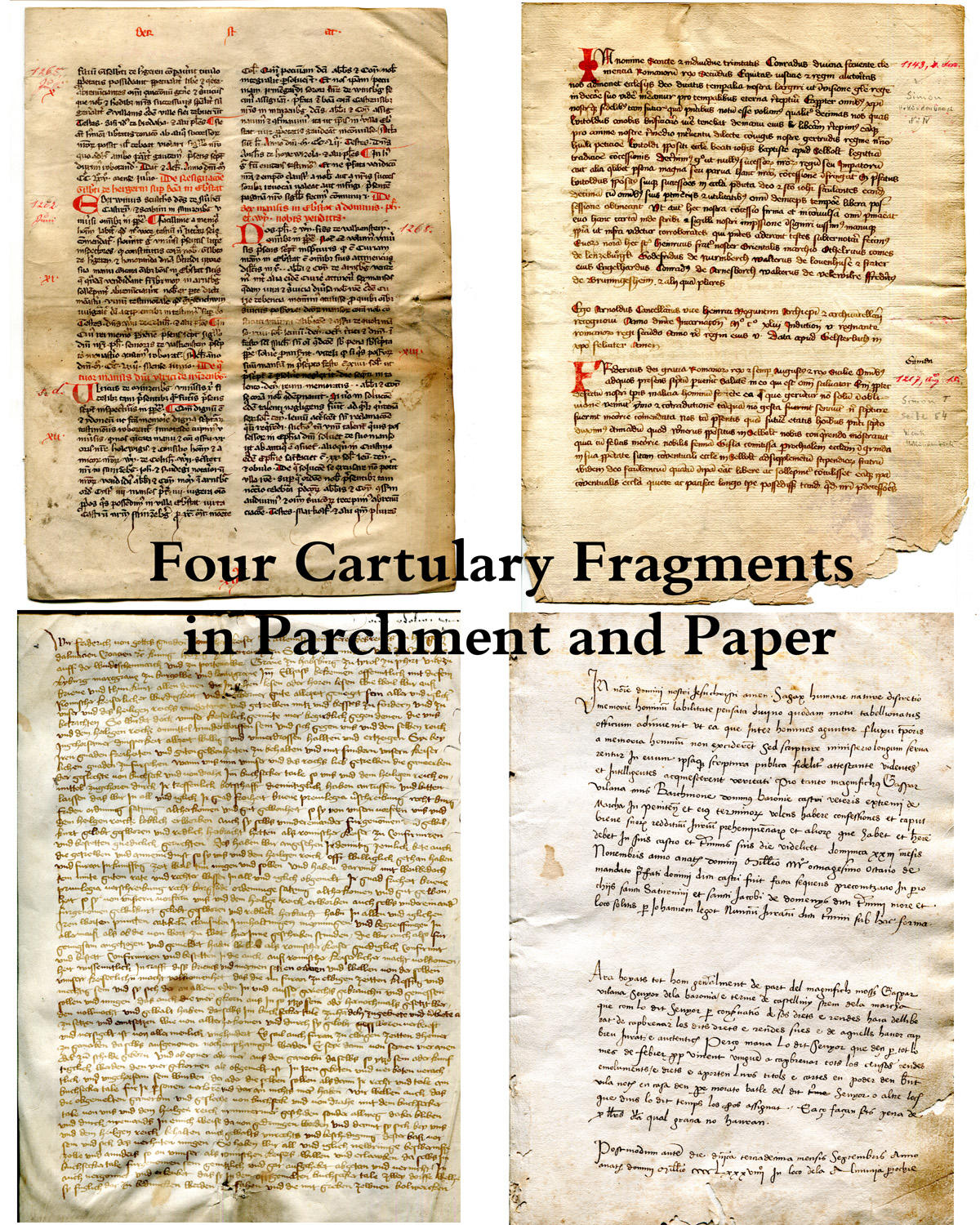David W. Sorenson
(David Berman, Numismatist)
“Four Cartulary Fragments in Parchment and Paper”
Abstract of Paper
Presented at the 51st International Congress on Medieval Studies (Kalamazoo, 2016)
Session on
“Parchment or Paper? Choosing the Writing Medium in the Era Before the Printing Press”
Session 5 (2016) in the Research Group Series on “Medieval Writing Materials”
Sponsored by the Research Group on Manuscript Evidence
Organized by Mildred Budny
2016 Congress Program and 2016 Congress Report
[Published on 2 April 2016]
 Among the traditional uses of parchment after 1500 is the well-known deed, which in some places continued until living memory. Previously the deeds which were issued by certain sorts of issuers were recorded in copy-books. These “cartularies” provide copies, in some cases where the originals no longer survive.
Among the traditional uses of parchment after 1500 is the well-known deed, which in some places continued until living memory. Previously the deeds which were issued by certain sorts of issuers were recorded in copy-books. These “cartularies” provide copies, in some cases where the originals no longer survive.
In this paper we will examine four fragmentary unpublished examples, two on parchment and two on paper, three from Germany and one from Spain, produced between the thirteenth and fifteenth centuries, and consider various aspects of them: what they were used for, what sort of cartularies they were, as well as what sort of documents they contain. It may be possible to determine some of the reasons for parchment versus paper use, particularly in view of the continuing use of parchment for the documents which they copy.
*****
The four leaves depicted here are respectively — in horizontal rows from top left to bottom right — from Arnsberg (North Rhine-Westphalia), Selbold (Hessen), Buchsechertal, and Vallfort (Cataluña), in the order presented in the paper.
*****
Website Editor’s Note
The Abstracts for the other presentations by David W. Sorenson at Sessions sponsored by the Research Group on Manuscript Evidence at the International Congress on Medieval Studies appear here:
- Sorenson (2011 Congress)
- Sorenson (2012 Congress)
- Sorenson (2013 Congress)
- Sorenson (2014 Congress)
- Sorenson (2015 Congress).
The first four presentations belonged to our annual series of sessions on “Medieval Writing Materials” at the
See also the 2015 Congress Report.
David’s Abstract for our 2013 Symposium at Princeton University is available via Identity & Authenticity, with its download here.
We thank him for his generous contributions to our activities.
*****

See also the 2016 Congress Report.